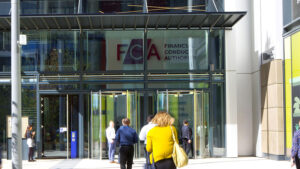The gospel of diversification is simple: vary your exposure and it’s unlikely everything will fail at the same time.
But there is no doubt that has been tested in 2022. In the first quarter of the year, the best-case scenario for a stock and bonds investor was a loss of 4.5% from high yield bonds. Every asset class fell, there was nowhere to hide. Interestingly, this was the first time this happened since 1990.
You can look at the final statistic from a glass half full or half empty perspective – to me, I think the former is more realistic. Long term, a diversified portfolio should give investors a balance between both growth and protection – from both an asset class and regional perspective.
This brings me to global equities, which are often seen as a one-stop shop for investors who don’t want to have to worry about deciding geographical allocations in their portfolios. With more than 41,000 stocks listed on stock exchanges worldwide, the opportunity is both vast and complicated – making it the ideal place for an active manager to flourish.
Many true active managers will not pay any attention to the benchmark and will simply invest where they find the best opportunities, regardless of where a company is listed. At times this could mean an even larger weighting to the US (68.7% of the MSCI World is invested is in US companies), or indeed being significantly overweight or underweight other countries. If the manager picks the right companies, the fund should do well regardless of what the wider stock markets are doing.
The rationale for diversification is clear: domestic equities tend to be more exposed to the narrower economic and market forces of their home country, while overseas stocks tend to offer exposure to a wider array of economic and market forces. The UK is the classic example – any investor who has restricted themselves to a value-tilted index like the FTSE 100 has missed out on stellar returns from the growth-oriented, US tech behemoths in the past decade.
Detractors would point to globalisation, and the fact that many domestic multinationals give investors enough coverage to global equities – for example, the FTSE 100 garners half of its earnings from overseas. But simply focusing on domestic companies means you lose access to those same leading global companies overseas (who also generate earnings from across the globe). Another benefit is the ability to hedge away currency fluctuations through a global portfolio.
Our approach
With more than 300 funds sitting in the Investment Association Global Sector, there are a few considerations we take as a team to gain exposure.
Our first port of call tends to be which investment style we feel is best suited to the current environment. A core holding often comes front of mind in this situation, so the likes of Fidelity Global Special Situations, which is a style agnostic vehicle of around 100-150 holdings and is unlikely to have large country or sector bets.
Another we have liked in this bucket is the JOHCM Global Opportunities fund given the conservative “heads we win, tails we don’t lose too much” approach of manager Ben Leyland. This focus on capital preservation translates itself in the funds’ flexible cash position – where the manager can, and has on several occasions, held as much as 20% in cash if he feels the conditions in markets dictate.
Clearly this approach can change if we feel one style is more positive than another. For example, a quality growth approach like T Rowe Global Focused Growth Equity or LF Blue Whale Growth. By contrast, a value approach like Schroder Global Recovery, which really is well positioned to tap into any sort of continued resurgence in value investing; or a quality value approach, like Lazard Global Equity Franchise, a high conviction portfolio of 25-50 stocks, based on how many companies exhibit good value opportunities.
We also focus on asset correlation, by ensuring we have funds with varying levels of beta in order to provide smoother returns for what typically accounts for around 25 per cent of our investment portfolios.
How much US exposure?
As mentioned, the choice of stocks opens up the ability for managers to produce markedly different performance to the MSCI World. One area we do focus on is the exposure to US equities within the index. Essentially, how global is your global fund? A good example would be the likes of the Brown Advisory Global Leaders fund, which has just over a third in the US (37.5%) – we can’t stress enough the importance of diversity in these returns.
The small and mid-cap effect
One of our main investment principles is that we believe small and medium-sized companies will outperform large-caps over the longer-term. The vast majority of the listed companies will sit in this part of the market and it also takes away a degree of macro by having a heavy focus on both individual company and sector specifics.
The Baillie Gifford Global Discovery fund fits the bill, the 75-150 stock portfolio consists of what the team believe to be the most innovative and fast-growing smaller companies in the world. It has a strong growth bias and is aggressive in nature.
Ignore dividends at your peril
Last, but not least, is we also want an income element to our global equity exposure. These are often core holdings given their exposure to mature, dividend paying companies. M&G Global Dividend and Fidelity Global Dividend both stand out as examples, and offer welcome diversification for those investors concerned that they are over-reliant on the same few companies for their dividend yield in the UK.
This article was written for Portfolio Adviser by Chelsea Financial Services managing director Darius McDermott.







